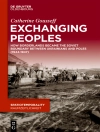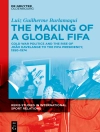Migration, in its many forms, has often been found at the center of public and private discourse surrounding German nationalism and identity, significantly influencing how both states construct conceptions of what it means to be ‘German’ at any given place and time. The attempt at constructing an ethnically homogeneous Third Reich was shattered by the movement of refugees, expellees, and soldiers in the aftermath of the Second World War, and the contracting of foreign nationals as Gastarbeiter in the Federal Republic and Vertragsarbeiter in the German Democratic Republic in the 1960s and 70s diversified the ethnic landscape of both Cold War German states during the latter half of the Cold War. Bethany Hicks shows how the regional migration of East Germans into the western federal states both during and after German unification challenged essential Cold War assumptions concerning the ability to integrate two very different German populations.
عن المؤلف
Bethany E. Hicks, Ouachita Baptist University, Arkansas, USA.












